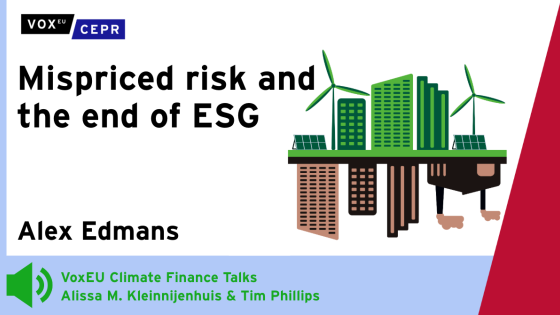At first sight, the spatial distribution of territorial-based greenhouse gas emissions does not seem such a core issue in the climate change debate.
- First, the major greenhouse gases are mixing uniformly, which implies that the climatological consequences are independent from the geographical location of emissions.
- Second, in terms of responsibilities, the fundamental origin of emissions is human consumption, which is increasingly disconnected from production sites (e.g. IPCC 2014).
- Third, in terms of global efforts to reduce emissions, such as those under way to prepare for the Paris meeting in December 2015 (e.g. Bosetti and Frankel 2014), the negotiating parties are nations, not geographical areas.
This is all true and well grounded, and may explain the relatively scant efforts to address the spatial distribution of global emissions using subnational data.
The spatial distribution of emissions matters for policy
However, in terms of regulation, the spatial distribution of greenhouse gas emissions may in fact be crucial. On the one hand, the main bulk of policies regulate emissions at the production source (command and control instruments, taxes, tradable allowances) and thus the emission distribution matters because policy stringency varies depending on spatial location. On the other hand, spatial distributions within countries may shape demands of local interest groups, which in turn influence national environmental policy formation. Moreover, the outcome of the negotiations on climate in recent years have made it increasingly clear that mitigation efforts should be polycentric, involving efforts at all levels of jurisdiction, whether international, national, or local (Ostrom 2009, Barrett 2008).
Greenhouse gas emissions are linked with virtually all aspects of human activities, and thus widely dispersed across the Earth’s surface (and shifting eastward, as illustrated by our previous calculations of the world’s gravity centre of CO2 emissions – see Grether and Mathys 2009). But what is the extent of this spatial dispersion? How has it evolved over time? And do within-country inequalities matter as much as between-country ones? To answer these simple but fundamental questions, we use the Theil index and its decomposition properties for the two major greenhouse gases: carbon dioxide (CO2) and methane (CH4).
Within inequalities matter more, and they are on the rise
The EDGAR database of the European Commission (2011) provides annual emissions by sector of origin and geographical cells of 0.1° latitude x 0.1° longitude across the Earth’s surface, over the period 1970–2008. Results for the two gases are reported in Figures 1a and 1b.
- Note first that spatial inequality is roughly 50% larger for CO2 than for CH4.
This reflects the fact that the major emission sources for CO2 (fuel consumption in electricity and heat production, manufacturing, and transport) are on average more concentrated than for CH4 (cattle, waste management, coal and gas production). The 1997/1998 peak is due to the enormous forest fires in Indonesia, among the largest such fires ever recorded in history.
- A second striking pattern is that within-country inequalities are two to three times larger than between-country inequalities.
That is to say that the common practice of comparing emission densities across nations is misleading as it captures less than a third of total spatial inequalities. Further decompositions, provided in Sauter et al. (2015), reveal that differences across sectors account for most spatial within-country inequalities.
Figure 1. Theil indices of spatial inequalities (BC: between-country; WC: within-country)
(a) CO2

(b) CH4

- Third, over the sample period, and for both gases, between-country inequalities are decreasing, while within-country inequalities are increasing.
The former trend is basically due to large emerging countries like China and India catching up in terms of both consumption and economic activity. This catching-up process increased the average emission density of the two Asian giants, and strongly contributed to the gradual decline of the between-country component of the Theil index. However, the latter trend is more general, observed in virtually all countries, and is consistent with the combination of increased urbanisation and specialisation that have characterised the dispersion of people and economic activities across space during this period of growth and globalisation. The latter trend being stronger, the overall Theil index exhibits a net increase, in particular for CH4 and at the end of the period.
Will most damages fall on the innocents’ children?
A related issue in the climate change debate is which zones will be most affected by future damages. A particularly grim prospect is the potential disappearance of small islands that bear no responsibility in emissions. How far can one extrapolate from that dramatic example? On the basis of data from the World Bank (2014a, 2014b), we propose a final illustrative exercise based on a very rough proxy for future damages i.e. the number of estimated hot days times population in 2050. Figures 2a and 2b report simple correlations between emissions and future damages – as measured by the number of hot days multiplied by population – for both gases. As both emissions and our constructed proxy for damages are linked to human population, the absolute level of the correlation coefficients is bound to be positive (an alternative decomposition technique, relying on Theil indices, is proposed in the background paper). It is rather the comparison of these levels, across types of correlations and over time, that is informative.
Three major patterns emerge.
- First, the emissions-damages correlation is smaller for CO2 than for CH4.
This could be expected, as damages tend to be concentrated in densely populated tropical zones, which are rather poor, i.e. with relatively low fuel consumption levels. This disparity is less pronounced for CH4, with emission sources that are less connected to income levels.
- Second, the correlation is stronger between-country (solid line) than between cells (dashed line), suggesting that emission–damages disparities, and the social tensions associated with it, are more important within-country than between-countries.
- Third, while these correlations are rather stable over time for CH4 (except in 1997, due to the above-mentioned forest fires in Indonesia), they are strongly increasing for CO2.
This can again be linked with the income convergence process experienced by emerging economies, particularly from Asia, and in the last two decades. However, note that the between-cell correlation is increasing less strongly, which suggests that social tensions remain important within countries.
Figure 2. Correlations between emissions and damages
(a) CO2

(b) CH4

Concluding remarks
In short, spatial inequalities in greenhouse gas emissions are more important within-country than between-country, and while between-country inequalities are falling over time, within-country inequalities are increasing. Further, social tensions arising from the discrepancy between emissions and damages, although softening for CO2, are more important within countries than between countries. These estimates should be completed by other indicators, in particular to account for all the uncertainties and dimensions of damages. They illustrate the importance of capturing spatial inequalities in the climate change debate.
References
Barrett, S (2008), “Climate treaties and the imperative of enforcement”, Oxford Review of Economic Policy 24(2): 239–258.
Bosetti, V and J Frankel (2014), “A pre-Lima scorecard for evaluating which countries are doing their fair share in pledged carbon cuts”, VoxEU.org, 24 November.
European Commission (2011), Emission database for global atmospheric research (EDGAR), release version 4.2, Tech report, Joint Research Centre (JRC) and Netherlands Environmental Assessment Agency (PBL).
Grether, J-M and N A Mathys (2009), “How fast are CO2 emissions moving to Asia?”, VoxEU.org, 21 November.
IPCC (2014), Climate Change 2014: Mitigation of Climate Change, Contribution of Working Group III to the Fifth Assessment Report of the Intergovernmental Panel on Climate Change, Cambridge University Press.
Ostrom, E (2009), “A Polycentric Approach for Coping with Climate Change”, World Bank Policy Research Working Paper 5095.
Sauter, C, J-M Grether, and N A Mathys (2015), “Geographical Spread of Global Emissions : Within-country Inequalities are Increasing”, University of Neuchâtel, IRENE Working Paper 15-01.
World Bank (2014a), Climate change knowledge portal.
World Bank (2014b), Health Nutrition and Population Statistics: Population estimates and projections.









